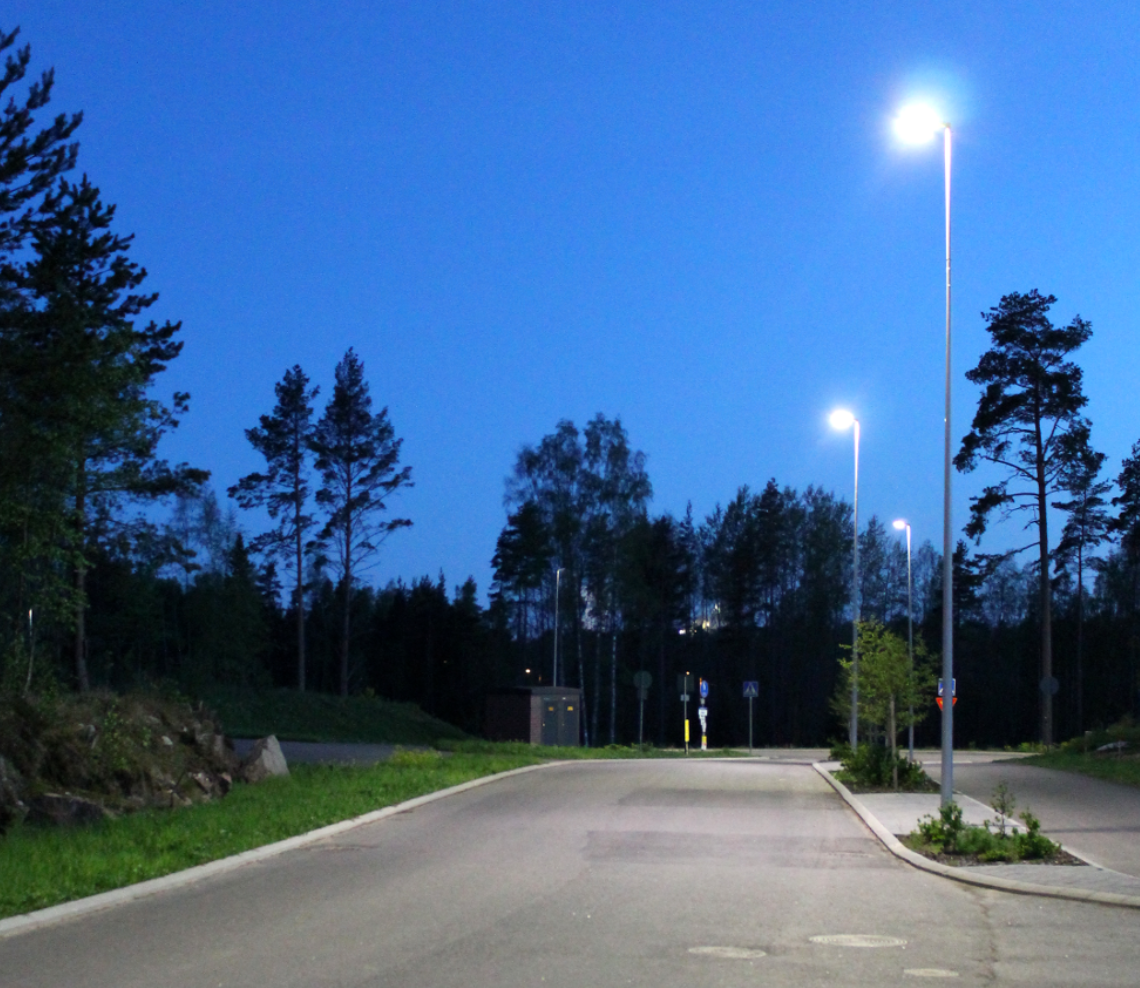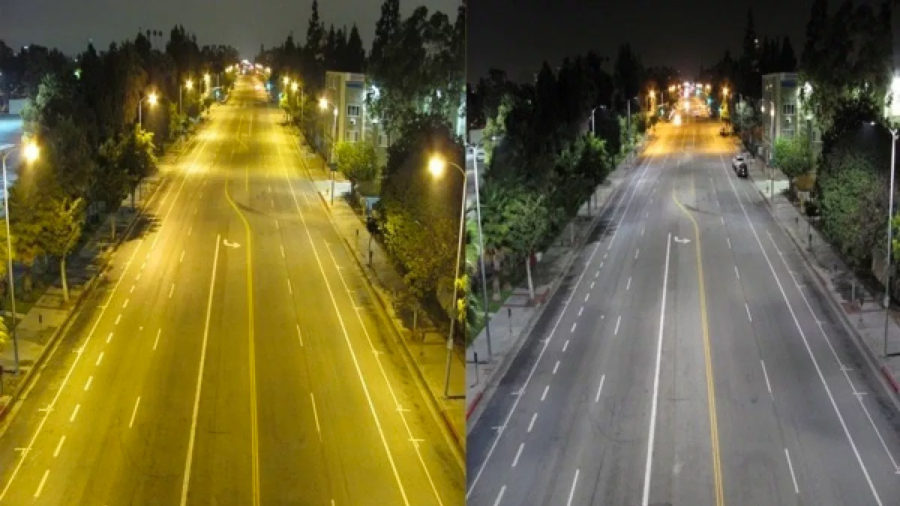Unlike some years ago, LED technology is now a clear choice for anyone purchasing street lights to public areas. Finding a perfect street light, however, is far from the obvious.
Here’s the challenge.
Before the age of LED, the contractors and designers had some 3 to 5 alternative street luminaires to choose from. Today, there are millions of options and the number keeps on growing as technology and suppliers evolve.
At the same time, most of the exterior lighting is on public areas and in many cases, at the very heart of the debate concerning safety, sustainability and environmental issues.
For anyone purchasing LED street lights, the goal is to find an energy-saving, sustainable solution that creates safety and appeal. But how to find the right solution among all of those alternatives? You can find the answer below.
1 What is a LED street light?
Street lights are a fundamental instrument in guaranteeing security from accidents and non-social components. street lights have been connected with sentiments of well being and reduction in mishaps.
LED Street light is an device that has a light-emitting diode (LED) and is utilized for open air LED lighting. LED Street light mostly comprises a capacitor, resistor, some with a triode tube and the MOS tube and the basic composition, making it a total of many components. Apart from those mentioned above, it is more ecologically well-disposed in light of the fact that it doesn’t contain mercury which is destructive to both the earth and our wellbeing.
Besides, LED Street light is more secure. It is in a condition of low voltage in which it can work to stability. Furthermore, LED Street light has better visual experience. Additionally it has a longer life of around 80,000 hours. It is more energy efficient and has more radiant light and high luminous efficiency.
2 Why choose LED street lights?
a.Long lifetime
Many LED lighting retrofits have been guaranteed to significantly lessen energy used
b.Low energy consumed
The anticipated lifetime of LED Street lights is normally 10 to 15 years, two to four times the life of as of now common HPS. When actually put to practice, the less successive need to service or support LEDs will mean lower maintenance cost.
c.RoHS consistency:
LEDs don’t contain mercury or lead, and don’t discharge harmful gasses if broken.
d.Quick restart:
Unlike mercury vapor, metal halide and sodium vapor lights (generally utilized as a part of street lighting), LEDs don’t have an issue restarting instantly like after a power cut off.
e.Quick turn on and off:
Unlike fluorescent and high-power release (HID) lights, for example, mercury vapor, metal halide, and sodium vapor lights, which take time to warm up once switched on, LEDs start off with full splendour right away.
f.More precise colour rendering:
The shading rendering record is the capacity of a light source to accurately duplicate the shades of the articles in contrast with a perfect light source. Enhanced colour rendering makes it simpler for drivers to see objects.
g.Lessened glare:
Directing the light descending onto the roadway reduces the amount of light that is directed at the driver’s eye.
h.Less appealing to night-time insects:
Nocturnal bugs are pulled in to bright light transmitted by numerous traditional light sources.
i.Optically productive lighting hardware:
Other kinds of street lights use a reflector to catch the light discharged upwards from the light. Indeed, even under the best of conditions, the reflector absorbs a portion of the light.
Similarly, for fluorescent lights and different lights with phosphor covered globules, the bulb itself retains a portion of the light directed down by the reflector. LED lights can, however, send light in the right direction without a reflector.
j.Higher light yield even at low temperatures:
While fluorescent lights are energy-efficient, they have a tendency to have lesser light yield at winter temperatures. This is not the case with LED Street lights.
3 What factors should be considered when buying street lights?
Are you planning to import LED street lighting lamps? Here are the key factors that you should consider:
a.The Power Supply
You need to carefully look at the power source. The power supply will determine how the LED streetlights will be running.
The voltage should be enough to light up all the LED lamps. It will be wasteful to get powerful LED retrofit lamps only to be let down by the available power supply.
Low supply of voltage means that the lamps will barely light. Even if they do, they won’t be bright as they are supposed to be.
Sometimes only a few lamps across the streets will work while the rest remain off.
When it comes to power, you need to check the street light bulb wattage. Does it match with the supply? If not consider going for lamps with a lower wattage.
b.Design and Construction
Check out the physical features of the LED street lamp. There are several factors that can determine whether it is a good product or not.
One of the factors that can hinder the performance of LED streetlights is poor construction.
Unlike the indoor lighting systems, LEDs are subjected to vagaries of nature. Poor workmanship can put the retrofits at high risk of getting damaged.
Common physical factors that can damage the LED street lamps include:
- A broken protection glass that allowed water into the LED chip
- Poor quality waterproofing gasket
- A rusty body
You need to choose a lamp whose construction won’t be easily affected by the above factors. For instance, it should have a thick and tough glass to offer adequate protection.
The streetlight should also have powder coating. This can provide protection various elements of weather such as wind, dust and heavy rain.
The body should have IP65 waterproof level. This means that is fully protected from all forces of water.
Consider going for the body that is made of aluminum. A chemically-treated aluminum will not rust easily. Other smaller parts should be made of stainless steel which is also immune to rust.
c.Pole Height
 Do not buy LED street light retrofit lamp before analyzing the pole height. Also, don’t assume that any bulb can match with any pole.
Do not buy LED street light retrofit lamp before analyzing the pole height. Also, don’t assume that any bulb can match with any pole.
The height of the street light pole will determine the wattage of the bulb that you should buy.
If the height of the pole is not more than 12 feet, buy an LED bulb whose wattage does not exceed 15 watts.
For poles between 12 to 15 foot, buy a bulb whose wattage ranges between 15 and 30 watts.
A pole whose height falls between 15 and 20 foot will match with a retrofit lamp that ranges between 30 and 50 watts.
d.Lumens
This is the brightness of the LED lights. How much light can the lamp produce when in proper working condition?
Your choice of the lumen is determined by various factors. One of them is the location of the streetlight.
If you plan to install the streetlight in a very dark area, buy LED lamps that have high lumens. They should be able to give out adequate light that will overpower the darkness.
The distribution of streetlights can also determine the luminosity of the lamps. If several lamps are distributed at one point you may consider getting LED bulbs that have a low lumen. Scattered street lamps call for high lumen bulbs.
e.Shape and Direction
LED street lamps are unidirectional. They illuminate in one direction.
Once you install an LED street light retrofit lamp, it will be very difficult to change its direction of light again. This means that you need to decide at the point of buying.
Take your time to check the lamp’s shape and design. These two factors will determine the direction of the light.
Sometimes the design can also influence the size of the beam.
f.LED Color of LED Street Light
LED street lights come in a wide range of colors. Personal goals play a role in determining the colors to install.
Popular colors that you can choose include bright white, warm white and cool white. The color variation is determined by the temperatures that the LED lamp produces.
Extremely bright colors are as a result of high temperatures being released. On the other hand, cool streetlights release dim colors
The color factor plays a critical role in affecting the energy that is consumed. You will pay high energy bills for bright colors as they have high wattage.
g.Rated Life
This is the measure of how long an LED street lighting retrofit lamp is expected to operate before it hits 70% of its initial brightness.
The issue may not be a cause of alarm as compared to conventional street lights. However, you still need to give it some attention.
Check the rate to ensure that it will last for 50,000 hours before its brightness goes down.
4 Conclusion
Choose a suitable street light needs to consider a lot of factors. Installing LED street lights also requires a considerable amount of capital. This means that you need to be extra careful with every step that you take not to mess up. If you have any need, please feel free tocontact us.





